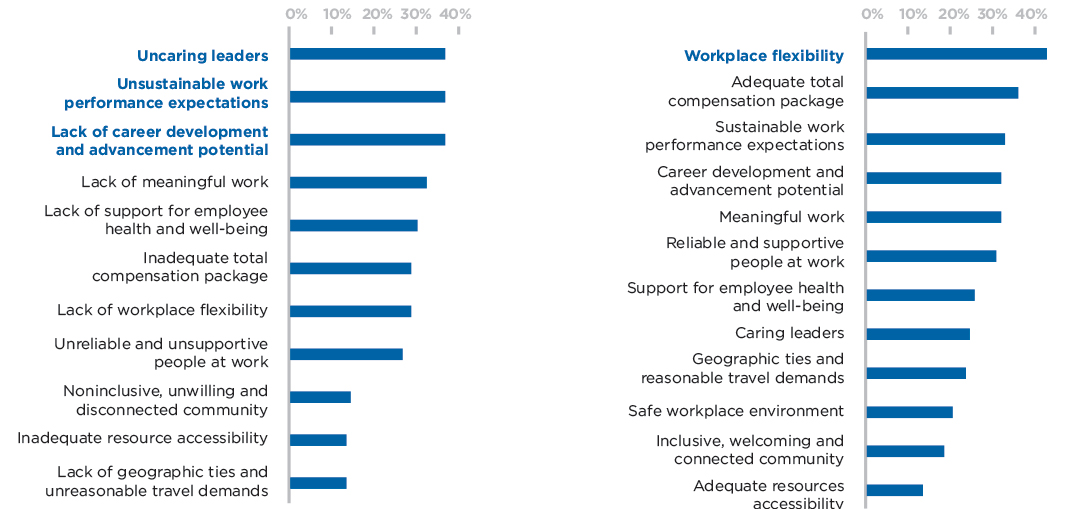On Leadership: Workforce on the move
Why are your employees leaving, and how can you get them back?

SUZANNA de BACA Aug 17, 2022 | 3:16 pm
3 min read time
807 wordsBusiness Record Insider, On Leadership, Opinion
Employees are on the move, and no one is sure how to get them back.
I recently moderated a panel discussion of top leaders from various industries about their experiences leading through the pandemic and continued disruption. Across industries and size of company, these leaders reported ongoing challenges in recruiting and retaining employees, as well as figuring out new workplace dynamics.
One of the panelists likened employee recruitment and retention these days to a revolving door. National data backs this up: Employees are still leaving the workforce in droves while others are returning. Some are coming back to the same companies but the majority are switching companies and careers. Employees are coming and going for different reasons, but many don’t intend to stay long if their needs are not met.
A recent McKinsey article delved into the top reasons people left a job without another one lined up, and also looked at why people accepted new jobs.
Why are people leaving the workforce? At the top of the list of why people left their jobs were uncaring leaders, unsustainable expectations of work performance, and a lack of career advancements. Lack of meaningful work and lack of support for employee health and well-being were close behind. Overall compensation – usually a major factor in employees exiting – was ranked sixth. And surprisingly, given all the conversations about hybrid options, a lack of workplace flexibility was in seventh place.
The McKinsey study reported that employees – fed up or exhausted – are continuing to quit jobs even without a new one lined up. This trend is not slowing down, even as recession looms. According to a recent survey by human resources firm Mercer, a third of American workers said they were considering quitting in the next six to 12 months. As a recent Bloomberg news article says: “US workers can’t quit quitting.”
Why are employees coming back to work? Despite all the quitting, some people are returning to work. However, McKinsey’s research revealed that people accepted new jobs for very different reasons than those driving them out of the workforce. By far, workplace flexibility was the No. 1 reason people choose their new employer. Compensation was the second-highest reason individuals accepted new jobs, and sustainable work performance expectations ranked third. Surprising to me was that caring leaders – the No. 1 reason they left – ranked eighth; while it caused them to leave, it was not what lured them back or to a new job.
Career and job change is the new normal. The McKinsey research showed that about 48% of the people who quit pursued opportunities in different industries. Furthermore, 25% of those who left and returned report being at least “somewhat likely” to leave their current workplace again in the next three to six months. Because job availability is high, employees reported that if their needs are not being met at one organization, they’ll be on the move again.
A whole new playbook for recruitment and retention. My takeaway from this data, and the conclusion at our recent panel, was that business leaders must now address the workforce with a whole new playbook. To recruit and retain employees long-term, employers can’t just focus on paying top dollar or touting an inclusive environment. Workers want it all.
To compete effectively for talent, leaders must now acknowledge that employees have many intersecting needs. Culture, workload, flexibility and compensation must all be addressed. Your new workforce may include career changers who will require training in your industry. While creating a more comprehensive employee value proposition and evolving your organization may take time and investment, it will be necessary to recruit and retain a workforce now accustomed to changing jobs frequently.
Leaders and companies that do not evolve their recruiting and retention playbooks will be stuck in the revolving door. But those who can think outside the traditional approach and provide this winning combination to employees will be poised to win in the future.
US employees have left and returned to the workforce for a number of reasons
from McKinsey’s Great Attrition, Great Attraction Survey
Top reasons why people left a job without another in hand (on left), Top reasons why people accepted their current job (on right)
Top reasons why people left a job without another in hand (on left)
Based on top three ranked choices from respondents to McKinsey’s Great Attrition, Great Attraction survey who left a job between December 2020 and December 2021 without another one in hand.
Top reasons why people accepted their current job (on right)
Based on top three ranked choices from respondents to McKinsey’s Great Attrition, Great Attraction survey who left a job between December 2020 and December 2021 without another one in hand and returned to traditional employment.










